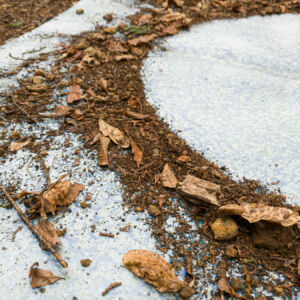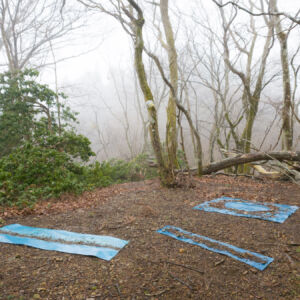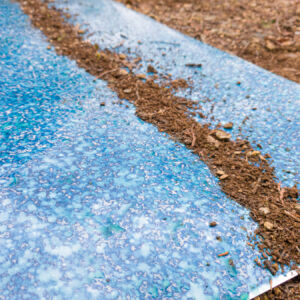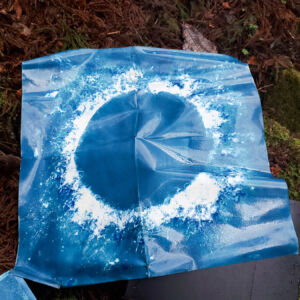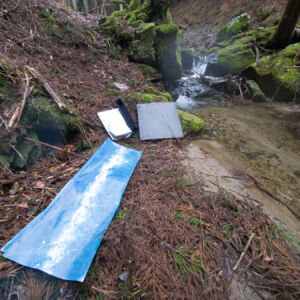Secluded Spaces—Latent Spring
Three Elements: Photograph, Cyanotypes & Machine
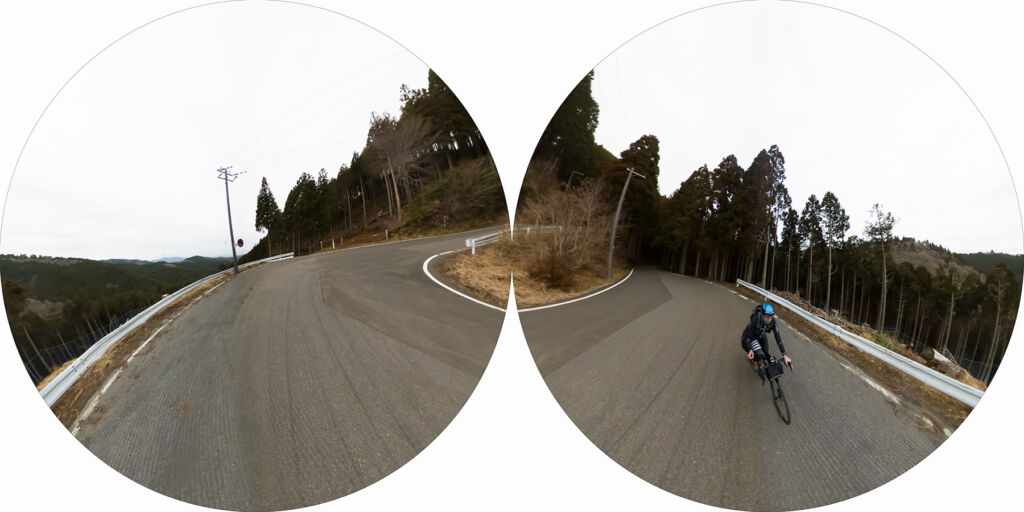
There are three types of works in the Secluded Spaces series as they were installed in The Terminal Kyoto (2022.4.9–5.8) showing the latent spring—the moment before buds emerge on trees and the forest wakes from its cold slumber. The first two sets consist of one large panoramic cube and various cyanotype prints made in the field with found materials. These two sets of works were made in the same place on separate days in Kyoto’s northern mountains above Kurama on the peak of Takitani-yama. And lastly there is a kinetic sculpture made in collaboration with Shuji Nakagawa’s discarded wood tools and the leftovers of his craft making in the form of sawdust. They all share a common theme of defining a boundary between the self and what lies outside it.
"Summit" Panorama
This panorama shows the forest on the peak of a mountain, battered by wind and stunted by the cold. The snow has just melted but the bleak bare branches form a network reaching to the sky. Underneath dry orange leaves litter the thin soil creating a blanket of texture under the horizon line.
Conceptually, the cube (installed in the gallery space but shown in a panorama viewer on this page) appears to show the landscape without any boundary, it gives the illusion of showing everything but in fact there are infinite possible scenes that aren’t shown because they sit outside of the microscopic centre of vision called the nodal point that forms the nucleus of the panorama. This centre-point excludes the observer, forcing the viewer to look at the photograph from the outside as if it was a surface, not an expansive scene with depth. This cube photograph creates some type of ideal image, or hyperreal landscape.
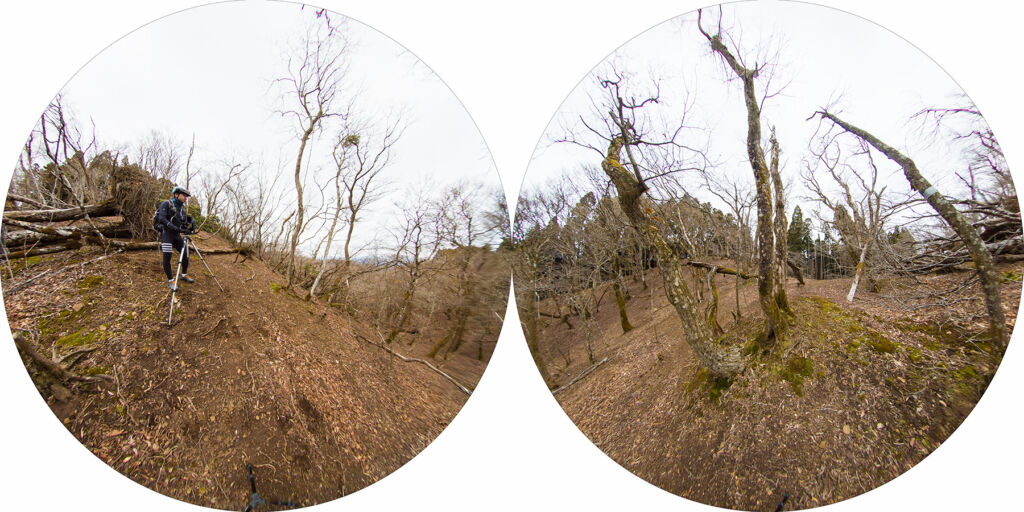
Nature Cyanotypes
An Interface of Landscape and Self
This series shows the prints as a record of a performance, leaving soil, stains and wrinkles on the paper just as they appeared when they were created. These prints were made with the soil and debris from the ground around the paper, leaving these shaded areas white. Blue areas are created where the sun’s energy converted the chemistry into Prussian blue pigment. During the exposure rain began to develop the prints while they were still being exposed to daylight while the substances in the soil and leaves reacted with the cyanotype chemistry as well. The prints were briefly rinsed in a stream before transporting them back to the studio where they were left to naturally dry. The exhibited prints show the marks of being rained upon and transported by bicycle through rough gravel roads.
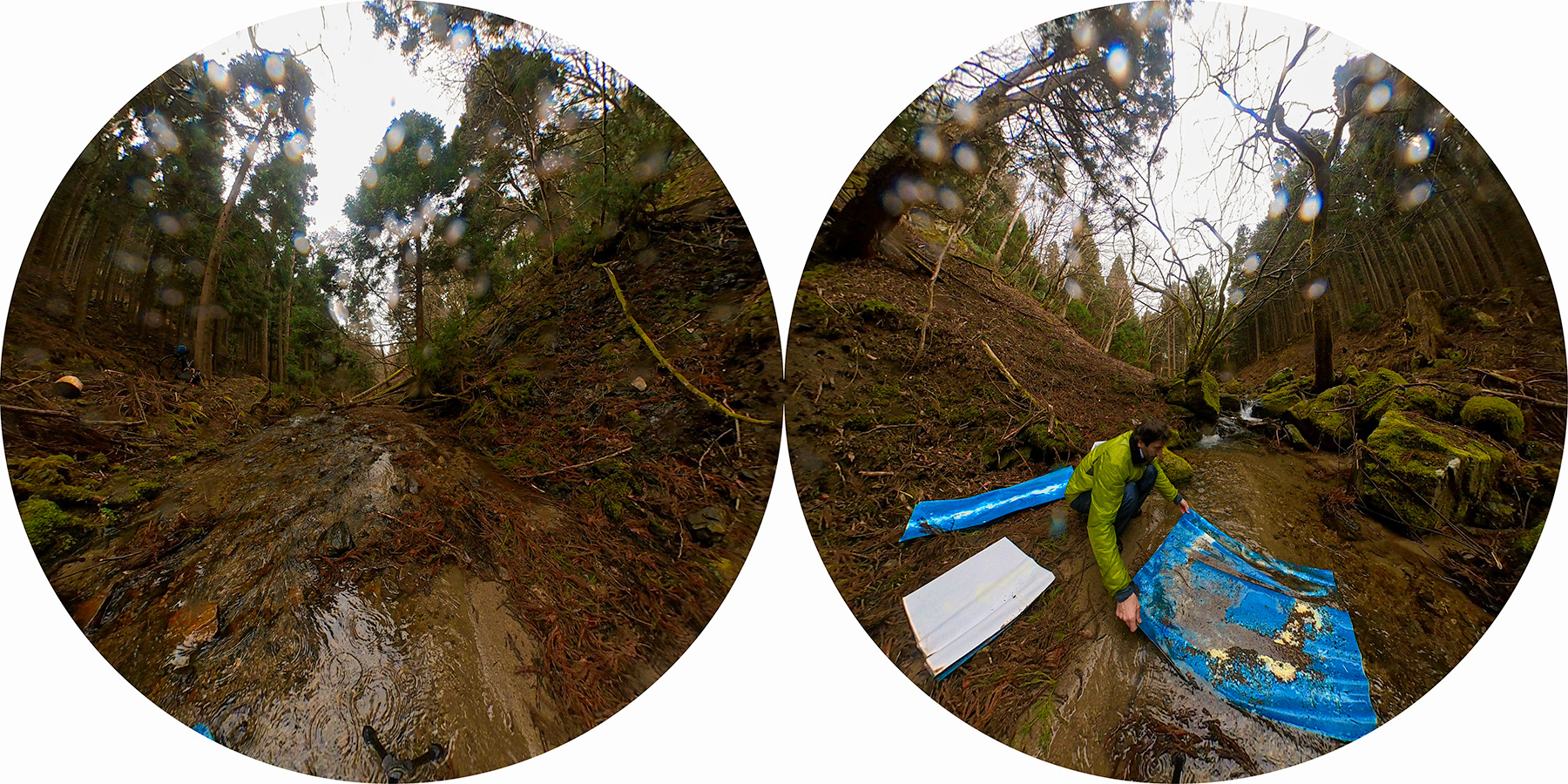
An Interface of Landscape and Machine II
(in collaboration with Shuji Nakagawa)
The sculpture is made from an industrial rotary stage discarded from a precision manufacturing factory. Inside the control box lies a small computer that sets the motor in motion step by step in a tireless loop that drags the discarded tools of Shuji Nakagawa. His sawdust, left over from his woodworking, is shaped into a circle that is neither complete nor incomplete. In this kinetic sculpture I hope that the interwoven existence of nature and humans is revealed.

The Terminal Kyoto(2022.4.9-5.8)に展示された「Secluded Spaces」シリーズは、木々に芽が吹き、森が冷たい眠りから覚める前の潜在的な春を表す3種類の作品で構成されている。最初の2組は、大きなパノラマキューブと、フィールドで拾った素材を用いて制作された様々なサイアノタイププリントである。この2組の作品は、京都の北山、鞍馬の上方にある滝谷山の頂上で、同じ場所で別々の日に制作されたものある。そして最後に、中川周士氏により提供いただいた古工具と、おがくず(工芸作品制作の残り物)とのコラボレーションによるキネティック立体インスタレーションである。これらはすべて、自己とその外側にあるものとの境界を定めるという共通のテーマを持っている。



